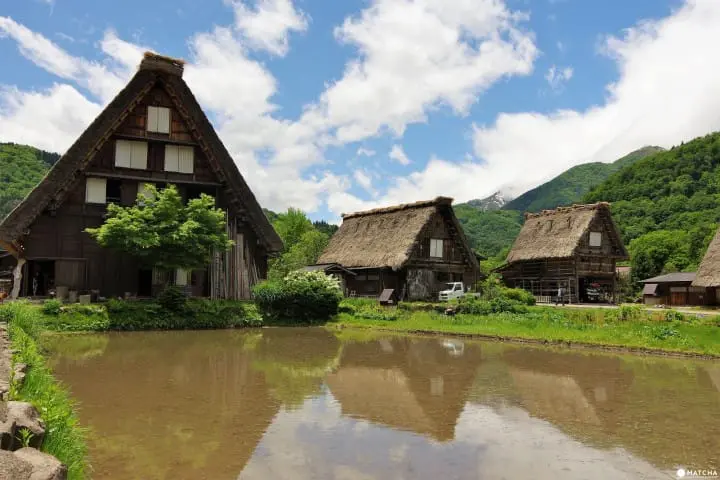Wada House: A Traditional Thatched Roof House In Shirakawa-Go, Gifu!

Today's feature is Wada House, a traditional thatched roof house in Gifu prefecture's Shirakawa-go, a world heritage site. Once inside, we'll show you all the unique features of Wada House, a nationally designated Important Cultural property.
What Kind of Place Is Shirakawa-Go's Wada House?

Shirakawa-go, also called Shirakawa village, is a World Heritage site famous for its thatched roof houses. In the winter months, the Shirakawa-go area is known for its heavy snow accumulation. So the kayabuki yane (*1) roofs have been steeply pitched on purpose, to help snow slide off the tops of the houses more easily. The roofs in Shirakawa-go are referred to as gassho-style, because their shape resembles a pair of hands pressed together in prayer (gassho).
*1 Kayabuki yane: A type of thatched roof construction that uses kaya (pampas grass) and other grasses for thatching.

Wada House was built in the middle of the Edo period, giving it a proud history of more than three hundred years. It's the largest gassho-style private residence in Shirakawa village, and is a nationally designated Important Cultural property. It's called Wada House because the Wada family is still currently living here, using the space on the premises that's not open to the public.
The first and second floor areas are available for viewing, so take off your shoes at the entrance, then pay the 300 yen admission fee at the reception area. Once you get your ticket, off you go!
First Floor: A Family's Former Daily Living Space

As soon as you enter, you'll see an irori , or sunken fireplace, occupying one corner of the room. In former times the irori played an important role inside the home, serving as a room heater, a cooking and dining area, and a light source, among other functions.
Beside the irori there's a small sign on display, with Wada House and the day's date written on it, making this the ideal photo opportunity. Incidentally, the fire at the irori stays lit throughout the year.








































![[Coupon Available] Attention Overseas Winter Sports Fans! Nagano's Sports Depot Has Evolved](https://resources.matcha-jp.com/resize/720x2000/2026/01/05-254819.webp)
![[2 hours from Tokyo ] 10 Quiet and Breathtaking Views of Mount Fuji in Yamanashi Hokuto City , Yamanashi - Part 2](https://resources.matcha-jp.com/resize/720x2000/2025/12/16-253037.webp)

![[Reopening in March 2026] Ikoma Sanjo Amusement Park Park, 45 minutes from Osaka , with free admission](https://resources.matcha-jp.com/resize/720x2000/2024/08/28-194409.webp)